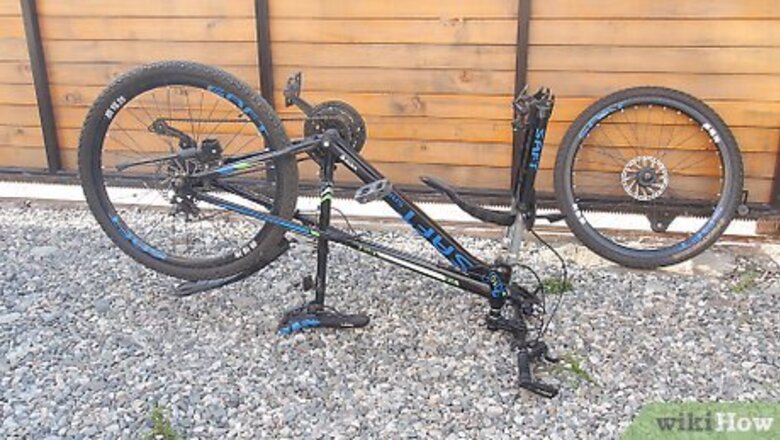
views
Removing the Old Pads
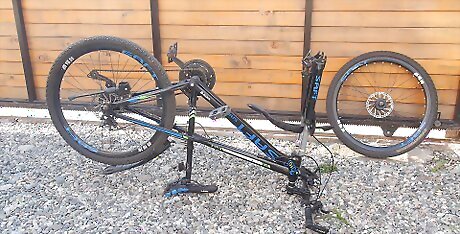
Place your bike in a repair stand and remove the wheel. Mount your bike in a repair stand to elevate it and make it easier to take the wheel off and work on. Loosen the quick release lever by hand or use a wrench to take off the axle nuts that hold the wheel in place. Pull it off the fork to gain access to the disc brake caliper. If you don’t have access to a bike repair stand, carefully flip your bike upside down and balance it on the ground, so the wheels are in the air.
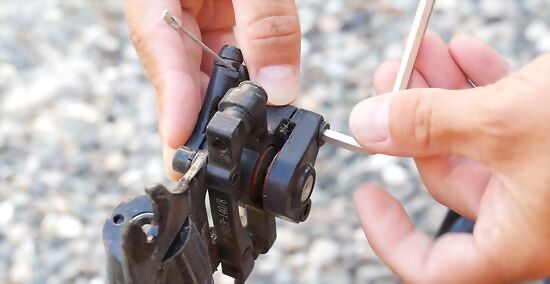
Pull out the retaining pin from the brake caliper by hand or using pliers. Bend the ends straight using needle-nose pliers and pull the pin out if your caliper uses a cotter pin. Remove the clip from the end of the pin, then unscrew the pin using an allen key or Torx screwdriver if the caliper uses a screw-in pin with a pin clip. The caliper is the mechanism attached to the bottom of the axle on the side where the disc brake rotor, which is the disc itself, is attached to the wheel. When your wheel is on the bike, the caliper goes over the disc. The retaining pin is a pin that runs horizontally across the disc brake caliper and holds the brake pads in place in the center of the caliper. A cotter pin looks kind of like a bobby pin. It has a U-shaped bend at 1 end and the 2 opposite ends are bent in opposite directions to keep it in place. A screw-in clip-style pin just looks like a single pin and has a small roundish clip at the end it is inserted by. Make sure you put this retaining pin somewhere where you won’t lose it so you can put it back when you’re done.
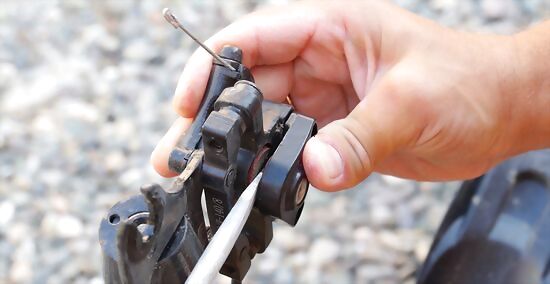
Push a flat-head screwdriver in between the pads and leverage them apart. Wedge the tip of a flat-head screwdriver into the crack between the brake pads in the center of the caliper. Move it back and forth a few times until you separate them all the way. The brake pads are just 2 rectangular metal pieces with padding on the sides that face each other right in the middle of the caliper. There is a small crack between the padding where the disc brake rotor goes. This resets the pistons so the new brake pads will fit properly inside the caliper. Do not squeeze your brake levers at any point during this process or you will pop the pistons back out and the new brake pads won’t fit.
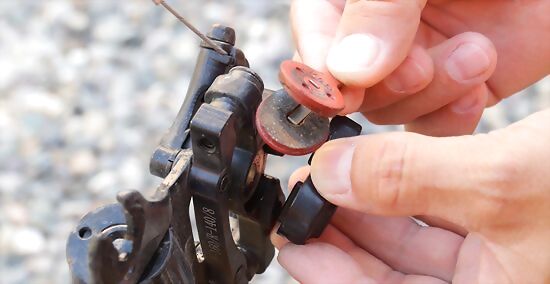
Pull the brake pads out by hand or with a pair of needle-nose pliers. Grab the pads between your fingers or in the jaws of a pair of needle-nose pliers. Pull them straight out and set them aside. Some disc brake pads use a clip spring system to hold them in place. If you can’t pull the pads right out, try pushing them inwards to release the spring mechanism before you pull them out. You might have to remove the outer pad first in order to pull certain types of disc brake pads out. If you can’t pull them both out at the same time, try this.
Installing New Pads

Clean the inside of the brake caliper using degreaser spray and a paper towel. Spray some degreaser into the middle of the caliper to clean out dust, dirt, and other contaminant buildups. Wipe away the degreaser with a clean paper towel. Any contaminants inside your brake caliper will transfer to your new brake pads, so it’s important to clean out the caliper first to keep the new pads working their best for as long as possible.
Put the new pads in the accompanying spring and squeeze them together. Line the U-shaped spring up with the grooves in the brake pads, so it is in between them and the pads are facing each other. Squeeze the pads together to sandwich the spring inside. On mechanical disc brakes, one brake pad sits right next to the motor and the other pad moves and squeezes it all together. You want the rotor to be really close to the stationary pad—not centered between the two pads. Not all disc brake pads have a spring. Refer to your new brake pads’ instructions if you don’t see a spring. It’s always a good idea to use new brake pads of the same brand as the brake caliper. Different brands may use different styles of pads, so they’re often not interchangeable.
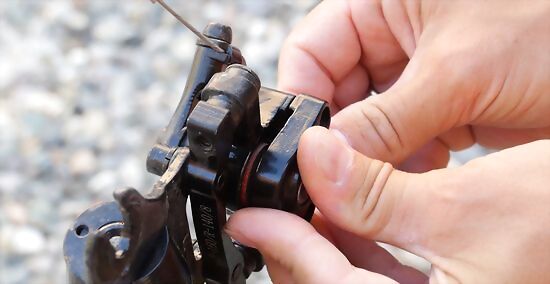
Slide the brake pads into the caliper. Keep pinching the pads together and slide them into the center of the caliper. Push them all the way in until they are fully slotted into the caliper. Some disc brake pads go in super smoothly and easily, while others might require more force to push them all the way in. If your new pads just come with 2 pads and no spring, you might have to put the inner pad in first, then push the outer pad in to lock them in place. It’s normal for the brake pads to be a little loose when you slide them into the caliper, so don’t worry if you notice this.
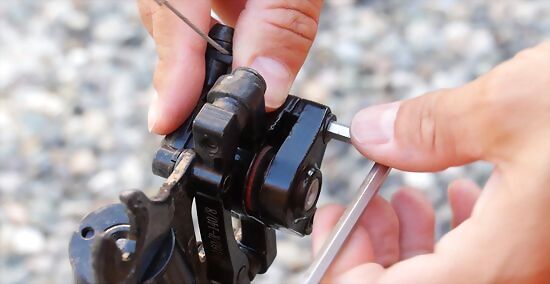
Insert the retaining pin back into the caliper. Push the pin all the way back in and bend the ends apart to lock it into place if it’s a cotter pin. Slide the pin in and tighten it using an allen key or Torx screwdriver, then slide the clip over the end if it’s a screw-in, clip-style pin. Your new disc brake pads may come with a new retaining pin. If so, you can use this instead of the old pin if you prefer.
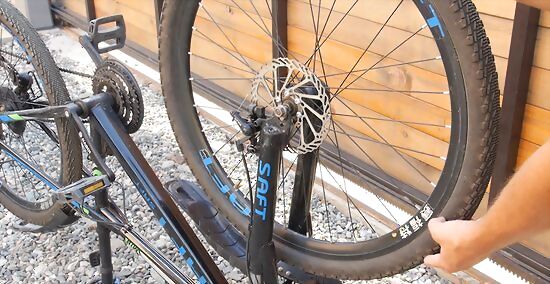
Put the wheel back on and spin it to check the caliper alignment. Put the wheel that you removed back into the fork and tighten the axle in place using the quick release lever or the axle nuts and a wrench. Give it a good spin and look closely at the disc brake rotor on the wheel to make sure it isn’t rubbing against the new brake pads. Remember that the rotor is just the disc itself on the wheel. It goes in between the pads inside the caliper. If the rotor is rubbing against the brake pads, adjust the caliper by loosening the caliper’s mounting bolts and realigning it until the disc rotor runs parallel to the new pads, then tighten the mounting bolts again. Don’t squeeze the brake lever until you’re sure everything is aligned properly. If the disc is running straight and smooth, you can go ahead and squeeze the lever to pop the pistons out and make the new pads bite the wheel.

Ride your bike in a safe area and brake hard 10-20 times to bed in the pads. Take your bike down off the repair stand and bring it outside somewhere relatively flat and car-free. Ride around and squeeze the brakes hard 10-20 times until they feel like they’re working well and braking powerfully. You’ll notice that the brakes feel stronger each time you pull them while you’re doing this process. Once you don’t notice any more changes in how powerfully they’re working, you can ride your bike as normal.
















Comments
0 comment